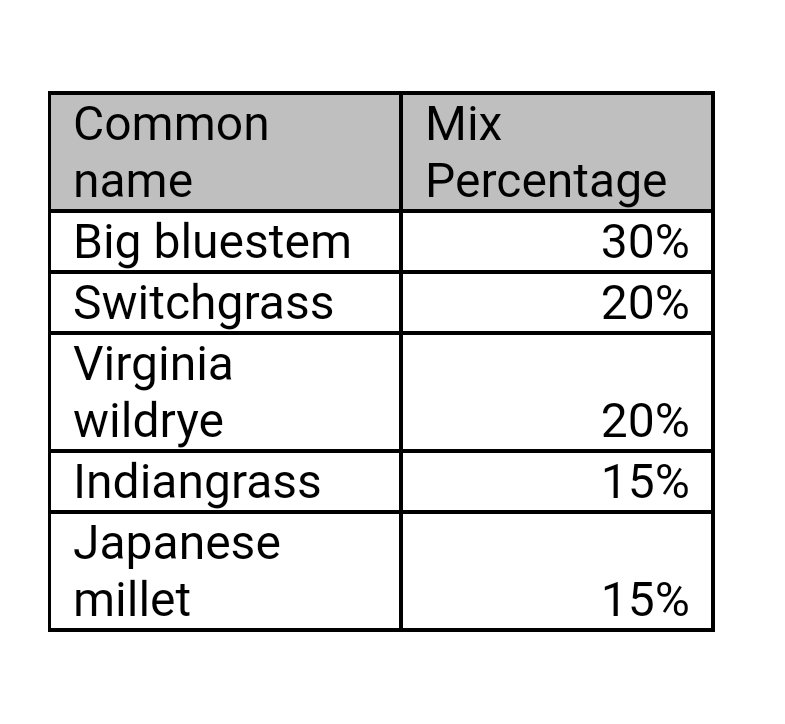pinetag
Well-Known Member
Probably the biggest checkbox on my habitat plan for this upcoming season is to create a lot more bedding/security cover. If any of you have seen my property tour thread you'll know that my place is mostly flat bottomland that tends to hold water after lots of rain, with the potential for an occasional (brief) flood. I definitely need to open up some canopy so the first thing I will be doing is creating some hinge cut pockets, then my thought is to get some good native grasses growing in and around these pockets. Possibly creating some travel corridors between them and seeding with the grasses as well. In checking the various seed company sites I came across this pre-mixed composition from Ernst. What do y'all think? I did some research on each of these plants and it looks like it would be ideal for what I am trying to accomplish. Thoughts?
Seasonally Flooded Wildlife Food Mix
Mix Composition
22.0% Panicum clandestinum, 'Tioga' (Deertongue, ‘Tioga’)
21.0% Elymus virginicus, PA Ecotype (Virginia Wildrye, PA Ecotype)
17.0% Andropogon gerardii, 'Niagara' (Big Bluestem, ‘Niagara’)
15.0% Echinochloa crusgalli var. frumentacea (Japanese Millet)
10.0% Carex vulpinoidea, PA Ecotype (Fox Sedge, PA Ecotype)
8.0% Panicum virgatum, 'Shawnee' (Switchgrass, ‘Shawnee’)
3.0% Chamaecrista fasciculata, PA Ecotype (Partridge Pea, PA Ecotype)
1.7% Heliopsis helianthoides, PA Ecotype (Oxeye Sunflower, PA Ecotype)
0.5% Eupatorium maculatum, PA Ecotype (Spotted Joe Pye Weed, PA Ecotype)
0.5% Juncus tenuis, PA Ecotype (Path Rush, PA Ecotype)
0.3% Asclepias incarnata, PA Ecotype (Swamp Milkweed, PA Ecotype)
Seasonally Flooded Wildlife Food Mix
Mix Composition
22.0% Panicum clandestinum, 'Tioga' (Deertongue, ‘Tioga’)
21.0% Elymus virginicus, PA Ecotype (Virginia Wildrye, PA Ecotype)
17.0% Andropogon gerardii, 'Niagara' (Big Bluestem, ‘Niagara’)
15.0% Echinochloa crusgalli var. frumentacea (Japanese Millet)
10.0% Carex vulpinoidea, PA Ecotype (Fox Sedge, PA Ecotype)
8.0% Panicum virgatum, 'Shawnee' (Switchgrass, ‘Shawnee’)
3.0% Chamaecrista fasciculata, PA Ecotype (Partridge Pea, PA Ecotype)
1.7% Heliopsis helianthoides, PA Ecotype (Oxeye Sunflower, PA Ecotype)
0.5% Eupatorium maculatum, PA Ecotype (Spotted Joe Pye Weed, PA Ecotype)
0.5% Juncus tenuis, PA Ecotype (Path Rush, PA Ecotype)
0.3% Asclepias incarnata, PA Ecotype (Swamp Milkweed, PA Ecotype)

